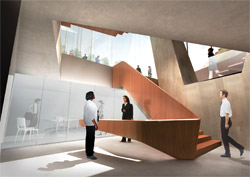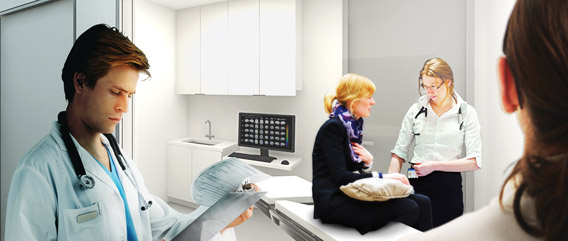Practice, Perfected
For the things we have to learn before we can do them, we learn by doing them,” declared Aristotle in “Nicomachean Ethics.” The ancient Greek philosopher had in mind the perfection of character when he penned his practice-makes-perfect credo, but it is no less relevant to an array of modern-day pursuits—from mastering the perfect pie crust to performing a piano concerto.
Increasingly, in fields where a beginner’s mistake can be fatal—from aeronautics to the military to medicine—lifelike simulation-based training bridges the gap between learning and doing. At P&S, medical students practice everything from taking a patient’s medical history or performing a physical exam—with actors playing the part of “standardized patients”—to suturing and resuscitation on high-tech mannequins. Midway through their fourth year, students prove their competency in simulated scenarios as part of the U.S. Medical Licensing Examination’s Step 2 clinical skills assessment.
Adults retain 5 percent of the content of a lecture but 75 percent of what they learn while doing a task, says James Lee, MD, assistant professor of surgery and associate medical director of the NewYork-Presbyterian/CUMC Simulation Center.
The best simulations have narrowly defined objectives and incorporate participant reflection and expert feedback, says Dr. Lee. In the debriefing, learners are helped to reinforce what they did well in relation to the learning objectives and identify areas of improvement.
The simulation center manages the selection and training of standardized patients and acquisition and availability of a pastiche of equipment distributed throughout departments within the hospital and medical center.
 Lobby of simulation center
Lobby of simulation centerThe role of simulation training for medical students will increase when Columbia’s 14-story Medical and Graduate Education Building opens in 2016. The 100,000-square-foot facility will set aside nearly 15 percent of its space for a simulation center: 13,300 square feet dedicated to training rooms featuring standardized patients and computerized, whole-body mannequins.
Students will be trained to a level of proficiency before they ever see a patient, says Dr. Lee, by having them practice in a simulated environment.
Particularly powerful will be suites of dedicated practice exam rooms wired for high-fidelity sound and video recording. Students will have the opportunity to practice more frequently with standardized patients, and professors will be able to use playback much as the coaches of professional athletes and musicians do—to highlight effective behaviors and point out mistakes. Feedback is a critical element of training, says Dr. Lee. Individuals learn from experience, but they sometimes learn more from the reflection.
- Log in to post comments


